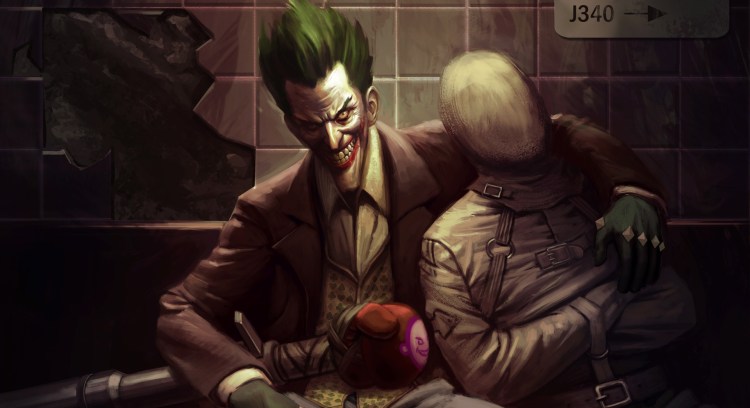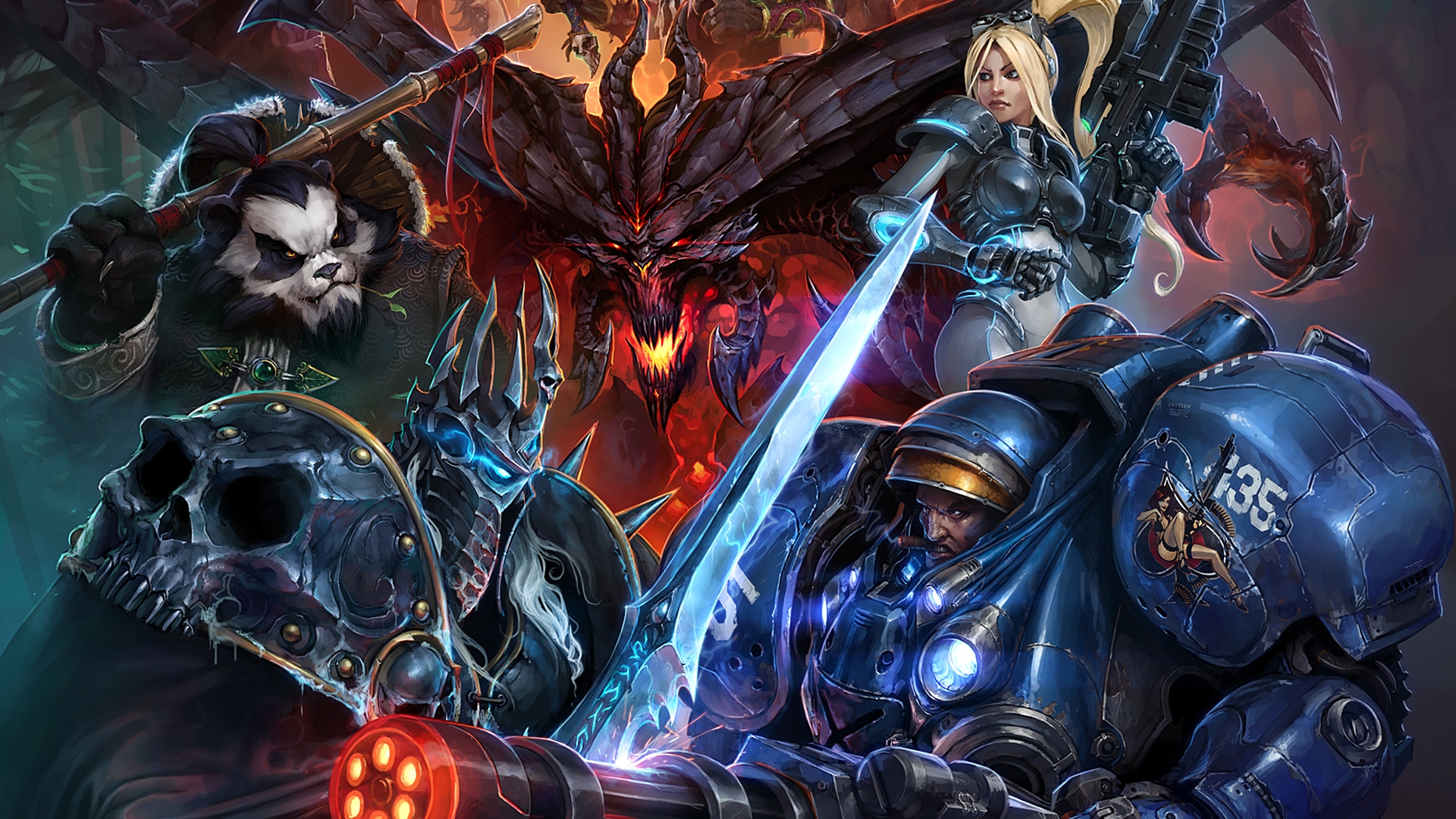Infinite Crisis is just one of the more recent examples of why the deluge of new multiplayer online battle arena and massively multiplayer online games needs to stop. A lot of them keep failing, and the price of failure is steep — layoffs and studio shutdowns.
Developer Turbine announced that it’s shutting down the DC Comics-based MOBA (Infinite Crisis) in August, after just releasing Infinite Crisis on March 26. And this shouldn’t come as a surprise. Most new MMOs and MOBAs today fail to capture a sizable audience, and are undermined by a handful of juggernauts. Just last year, only 10 games had nearly 60 percent of the market share for MMOs and MOBAs (this includes League of Legends, World of Tanks, Counter-Strike Online, and Hearthstone). Well over 200 MMOs and MOBAs are out, in beta, and in development, games like Glory of Gods, Deepworld, ArcheAge, and RaiderZ.
Titles like Dota 2 (with 1 million concurrent players), League of Legends (67 million people play each month), Lineage II (with 14 million players based in Asia), and World of Warcraft (7.1 million subscribers) are established IPs that dominate their markets, and this is leading companies into thinking there’s some serious money to be made — but there isn’t, and that won’t change any time soon.
These types of games become a lifestyle. Dota 2 isn’t just a video game a person plays for a few weeks, months even, and then sets it aside for something else. People pour thousands of hours into it, and they have many reasons for not giving another MOBA or MMO a proper chance. They become so ingrained in its online community, its tournaments; it’s where all of their friends play, and it takes a gargantuan amount of time, and herculean effort, to master the game’s mechanics. It’s difficult to pry people away from what they usually play. This has only gotten worse once developer Riot Games entered the scene with League of Legends.
“MMOs have been struggling for a long time, particularly since the rise of League of Legends,” writes Michael Pachter via e-mail, a research analyst at Wedbush Securities and the managing director at Equity Research. “It will be interesting to see if [Blizzard Entertainment’s MOBA] Heroes of the Storm causes people to defect from League of Legends. They are similar games, and I think Blizzard has Riot squarely within its sights when it markets its game.”
The secret to success
Of course, new MOBAs and MMOs do find success, but these have specific reasons for doing so. As Pachter mentioned, Heroes of the Storm seems to be taking off, and it’s growing in popularity every day. But remember who’s developing it — Blizzard Entertainment. The brand alone goes a long way in enticing folks to check out the studio’s next game. But Heroes of the Storm is also an amalgamation of all of Blizzard’s franchises, from Diablo to StarCraft (and even The Lost Vikings from its pre-Warcraft days).
It’s an easier sell than something like Infinite Crisis. Yes, it sports popular DC Comics characters, but this popularity doesn’t matter when it comes to MMOs and video games overall. Besides the Batman Arkham series, most superhero comic book games have done poorly. And people have full confidence in Blizzard delivering a high quality title, and so its characters speak more to the MMO/MOBA audience.
It’s one of a few companies capable of competing against League of Legends and Dota. Then there’s Neverwinter, a Dungeons & Dragons MMO that’s enjoying an influx of new players. But that’s thanks to the Xbox One version of the game. Microsoft’s console is helping Cryptic Studios’ MMO despite reviewing rather poorly when it first launched for PC back in 2013. It’s doing particularly well in China, as free-to-play MMOs and MOBAs have historically found success in Asian markets. It also helped that Neverwinter was actually a launch title for Xbox One in China.
Wargaming’s World of Tanks is incredibly successful as well, with a substantial consumer base. Last year the Belarusian company made over $475 million from World of Tanks alone. Wargaming is a one of a kind, as it’s the only studio that is providing vehicular combat on a massive scale with Tanks, World of Warplanes, and the upcoming World of Warships. It was able to dramatically differentiate its games from the competition by offering an experience you really can’t get anywhere else.
Survival of the fittest
For the MMOs and MOBAs that are holding on and surviving, their developers have to overcome prodigious obstacles to avoid suffering the same fate as Infinite Crisis. As a prime example, Carbine Studios’ struggling MMO WildStar is going free-to-play this fall as part of a huge revamp to help the game last another year. It was released only a year ago in June. Currently, Carbine is making big design changes such as making dungeons faster, and easier to access and run through.
Carbine marketed WildStar as a “hardcore” MMO experience back in 2014 before its launch, but now this revamp is abandoning that initial philosophy and vision the studio had. WildStar’s initial failure claimed casualties at the studio, and 60 people that were reportedly let go back in October 2014.
H1Z1 and PlanetSide 2 developer Daybreak Game Company was hit with layoffs at its Austin and San Diego offices back in February. Perfect World Entertainment, the publisher behind both Star Trek Online and Neverwinter, suffered a round of layoffs as well alongside Cryptic Studios, the devs behind both games (even as Neverwinter experienced some growth). Then there are even projects that get canceled entirely before even being released, like EA’s and Waystone Games’ failed MOBA Dawngate, which the publisher shut down after only being in open beta for 6 months.
Both Bethesda’s The Elder Scrolls Online and BioWare’s Star Wars: The Old Republic have had similar issues as well, as both also changed their business models to free-to-play, forcing both studios to change the core functions of their games after a tumultuous first few months on the market. These are some of the biggest entertainment IPs in the world, and even that couldn’t help fend off World of Warcraft. The Elder Scrolls Online in particular might’ve done better if the Xbox One, and PlayStation 4 versions weren’t delayed for a year. It also doesn’t help that these games are always crazy expensive to make.
“Every game has a different cost structure,” Pachter writes. “I’m sure that Dota 2 and Heroes cost $50 million or more, and Star Wars: TOR cost over $200 million. It takes a lot of players spending a lot of money to break even. The MMO model is probably broken, and I don’t think we’ll see any subscription MMOs again. There have been so many failed free-to-play MMOs, it is unlikely we’ll see many new entrants going forward.”
Perhaps companies should just focus entirely on the Asian markets, and give up on trying to compete in North America, and other Western regions. People in China and South Korea for example, mostly just play MMOs and MOBAs, as they represent one of the largest and fastest growing Internet business sectors in the world. There’s a better chance of success for companies there, but only slightly. League of Legends still dominates, alongside titles such as World of Warcraft and Dota 2.
The market is flooded enough as it is, and if any more of these publishers and studios continue to arrogantly announce new projects, they’ll have quite a difficult road ahead of them. A great first-person shooter or RPG will sell because people will eventually move on from what they currently play and purchase the next shiny new thing. The same rules unfortunately don’t apply to MOBAs and MMOs. It’s an oligopoly that shouldn’t be tampered with.
VentureBeat's mission is to be a digital town square for technical decision-makers to gain knowledge about transformative enterprise technology and transact. Learn More



